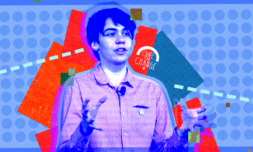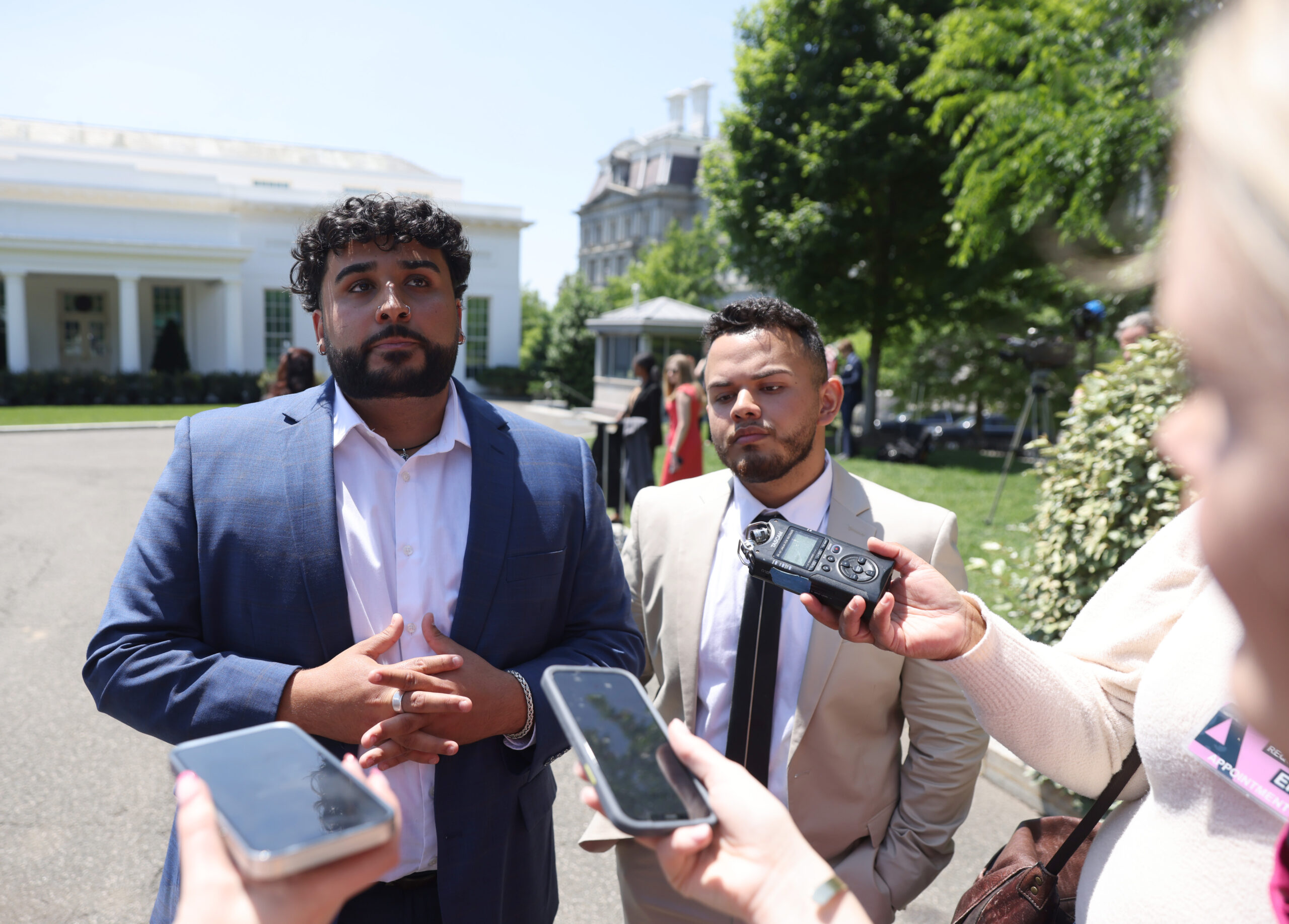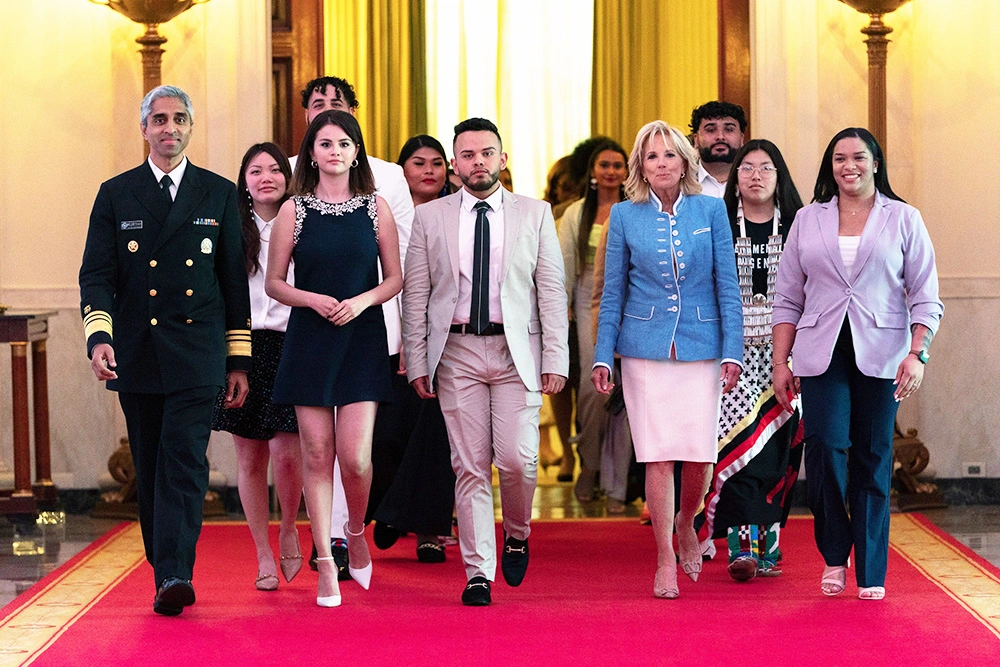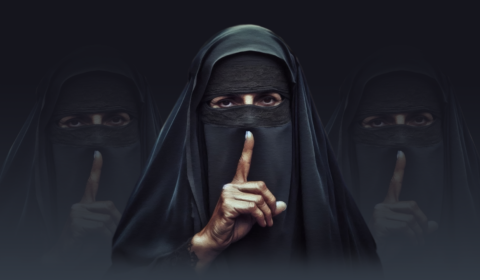We spoke with the Gen Z content creator and social impact strategist about how he’s channelling his passion for storytelling into action that empowers others, builds community, and guarantees no one has to suffer in silence again.
‘I want to create content that first and foremost personalises the conversation,’ says Jorge Alvarez.
The Gen Zer, who’s committed to authentically tackling mental health stigma, is best known on TikTok, where he educates his 130K+ followers on the importance of collective reflection, unlearning limiting beliefs, and generational healing.
His efforts, however, stretch much further than the app.
Armed with a steadfast passion for improving the wellbeing of young people across the globe, Jorge has spoken at the White House and teamed up with MTV Entertainment, Active Minds, and various non-profit organisations to expand his message of why we should be reframing the narrative in order to generate tangible change in this sphere.
‘There have been a few defining moments in my life that made me take my mental health more seriously,’ says Jorge as we begin our interview.
@ijorgealvarez #greenscreen lmk if you resonate with any part of my healing #originstory 🌱 #learnontiktok #tiktokpartner #healingjourney #unlearningtrauma ♬ Calm LoFi song(882353) – S_R
With regard to how his personal experiences have inspired his interest in guaranteeing no one has to suffer in silence again, he tells me that his inability to understand his own emotions in his points of crisis was what motivated him to start pushing for more transparency in this field of advocacy.
‘The reasons I had to blame for spiralling didn’t initially click, I would repeatedly ask myself why I felt that way, none of the terms we use today were in my vocabulary,’ he says.
‘I always described it as being stressed, sad, or overworked. It was a long time before I recognised that all of it could have been prevented or mediated had I had the appropriate language to articulate it growing up.’
This, he explains, acted as the catalyst for his desire to carry these lessons forward and foster inclusive spaces to facilitate a wider, more accessible, discourse.
Yet in 2021, when Jorge was failing to resonate with a lot of the content creators out there, he realised that he had his work cut out for him.
‘There weren’t many BIPOC individuals holding these discussions,’ he says.
‘I felt as though I needed someone like me to raise awareness about these issues and that’s when I took my voice to a digital platform to reach a bigger audience and be the face I wasn’t seeing.’
What Jorge refers to here is the structural racism and systems of economic inequality in America that continue to exacerbate these problems within BIPOC communities and disseminate harmful ideologies like that of toxic masculinity (or ‘machismo’ in the context of Hispanic and/or Latinx individuals).
Due to the dominant nature of these attitudes, Jorge has not only been tasked with guiding others through how to deal with such challenges, but dismantling them as well.
‘Toxic masculinity shows up in every culture in a different way, but generally it means that men are expected to keep quiet,’ he says concerning the role it plays in contributing to the staggeringly high number of men struggling with mental illness and in hindering their willingness to open up about it.
@ijorgealvarez we’re breaking that cycle RIGHT NOW 🙅🏽❌ thinking of making a series on this 🤔 #machismo #toxic #latinosbelike #latinostiktok #latinxtiktok ♬ original sound – ollie
‘While this is shifting quite rapidly among young people, there’s much to be done to address the obstacles men face when seeking to talk about their mental health in public settings.’
In Jorge’s opinion, confronting this demands a careful approach that both honours vulnerability and steers clear of language which may have a counterproductive effect.
‘Statistically, if you mention ‘toxic masculinity to a man, he’ll hold back,’ he says. ‘But if we focus on solutions and avoid honing in on the negative connotations, it’s a lot easier to digest.’
Jorge’s comprehension of how to correctly navigate this is attributable to his trauma-informed training, academic research assessing programmes supporting those with chronic mental illness, and on-the-ground work with crisis patients.
This exposure, he says, has helped him grasp exactly how those pursuing advice wish to be spoken to online.

‘They want to be able to relate, to know how you’re feeling, and to see that you’re staying true to yourself. It’s about being wary of spewing clinical or triggering jargon and showing up as someone you’re not.’
Acutely conscious that not one person’s journey is the same, Jorge’s ethos centres on ‘sharing what’s uncomfortable, but not what’s unsafe.’
His objective is to encourage meaningful conversations about mental health within his community (and beyond) that are as respectful as they are thought-provoking.
This, he emphasises, is not possible if he ignores his own limits.
‘Identify your capacity and set boundaries so that you have enough energy to show up in the way you would want to be shown up to’ says Jorge, whose unfettered sincerity that he’s ‘still learning too’ is a prime example of how social media personalities should express to their audiences that they legitimately care.
@ijorgealvarez Part 1! Looking forward to sharing the other 4 😊 #learnontiktok #tiktokpartner #therapytiktok #mindset #healingtiktok ♬ My Potna Dem – $ilkMoney























